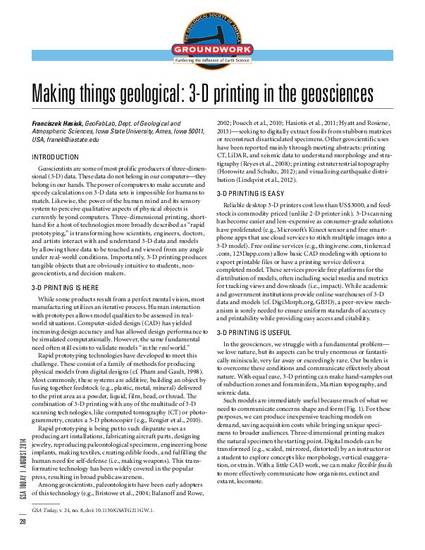
Geoscientists are some of most prolific producers of three-dimensional (3-D) data. These data do not belong in our computers—they belong in our hands. The power of computers to make accurate and speedy calculations on 3-D data sets is impossible for humans to match. Likewise, the power of the human mind and its sensory system to perceive qualitative aspects of physical objects is currently beyond computers. Three-dimensional printing, shorthand for a host of technologies more broadly described as “rapid prototyping,” is transforming how scientists, engineers, doctors, and artists interact with and understand 3-D data and models by allowing those data to be touched and viewed from any angle under real-world conditions. Importantly, 3-D printing produces tangible objects that are obviously intuitive to students, non-geoscientists, and decision makers.
Available at: http://works.bepress.com/franciszek_hasiuk/3/

This article is published as Hasiuk, Franciszek. "Making things geological: 3-D printing in the geosciences." GSA Today 24, no. 8 (2014): 28-29. doi:10.1130/GSATG211GW.1. Posted with permission.